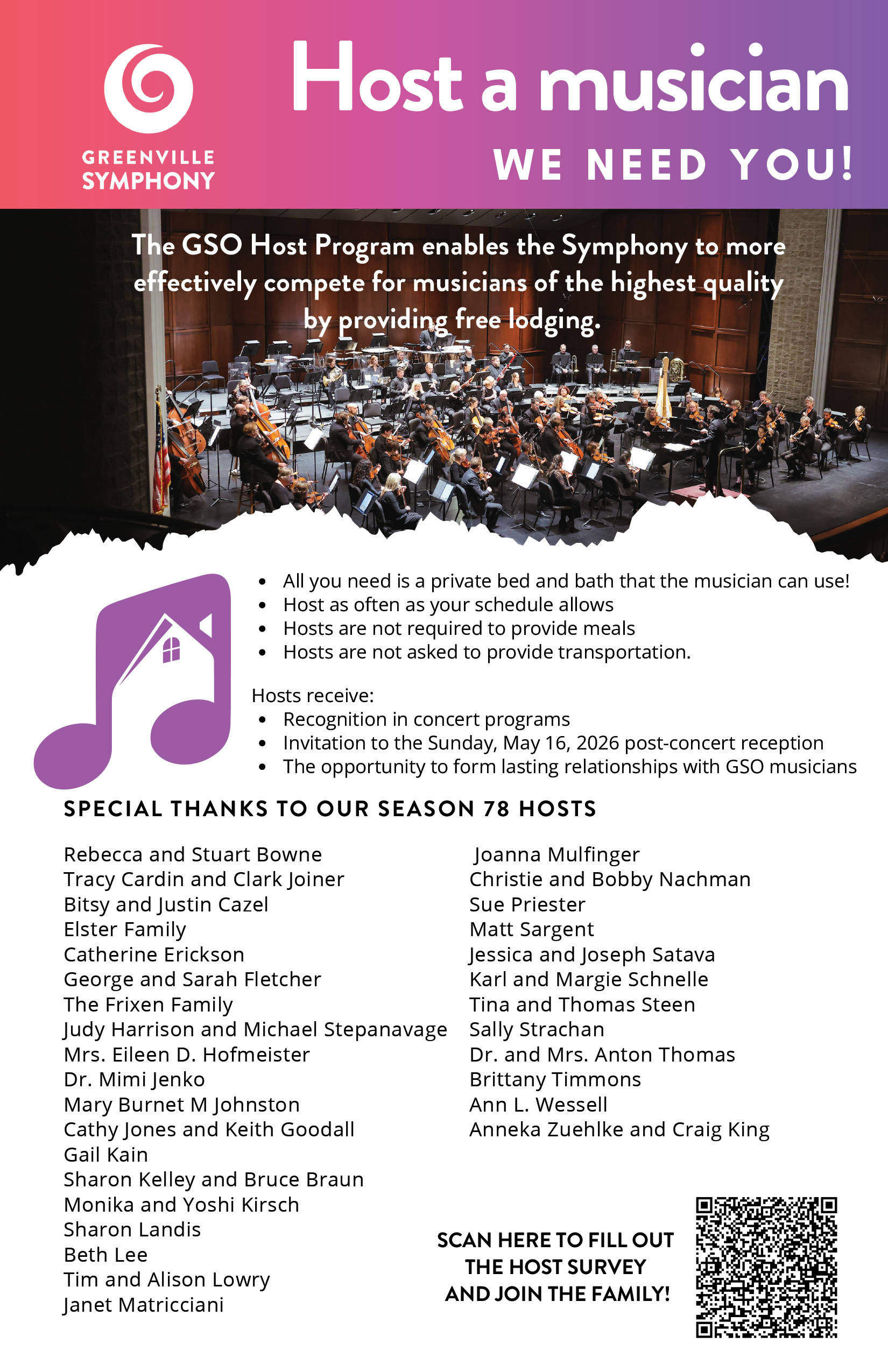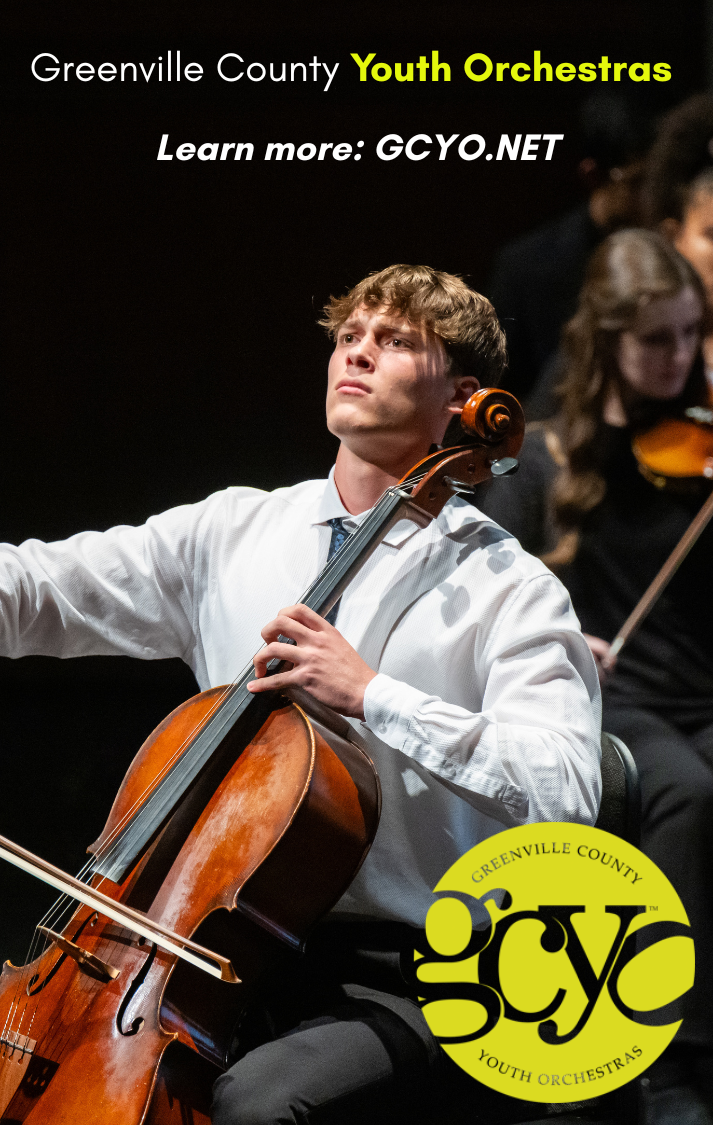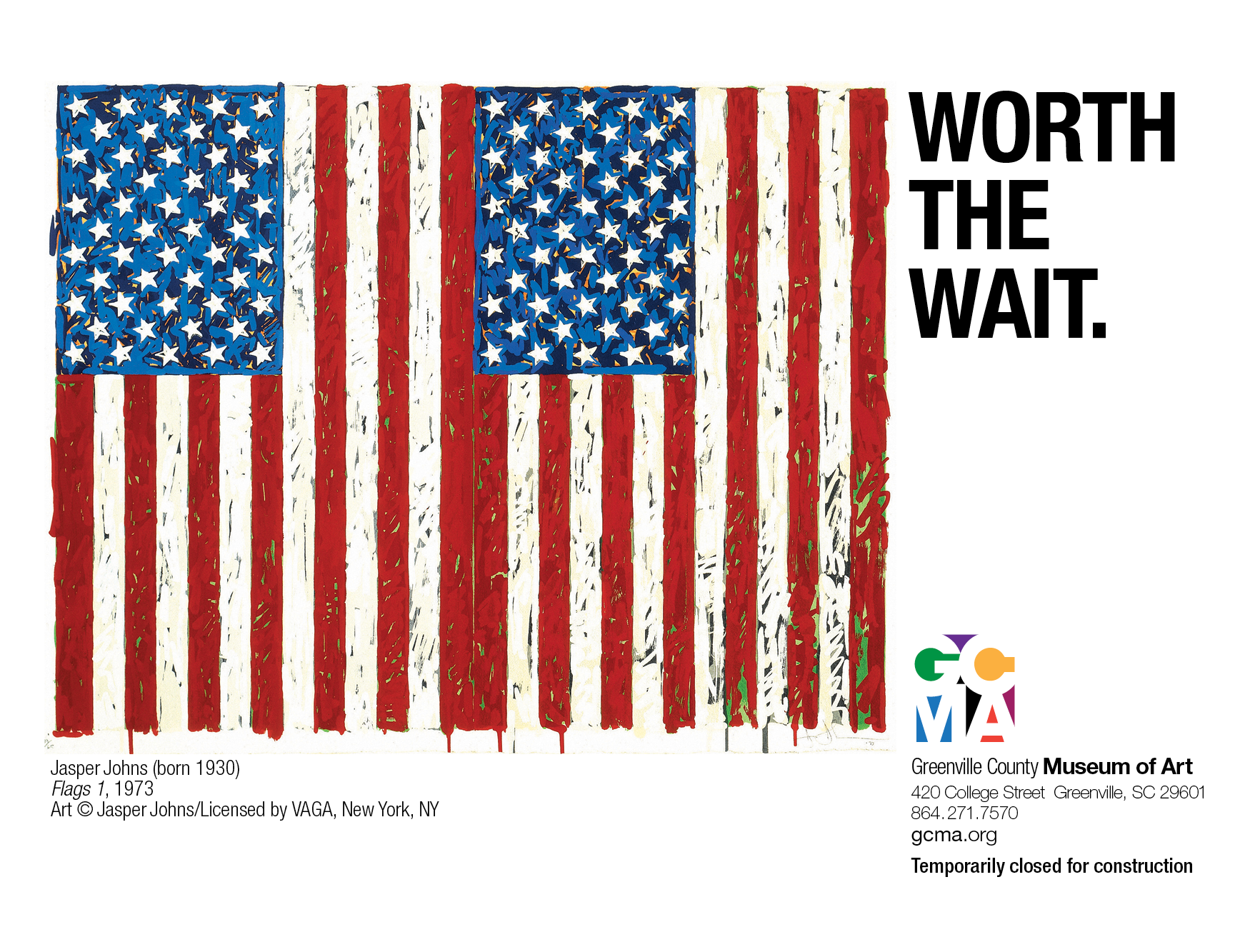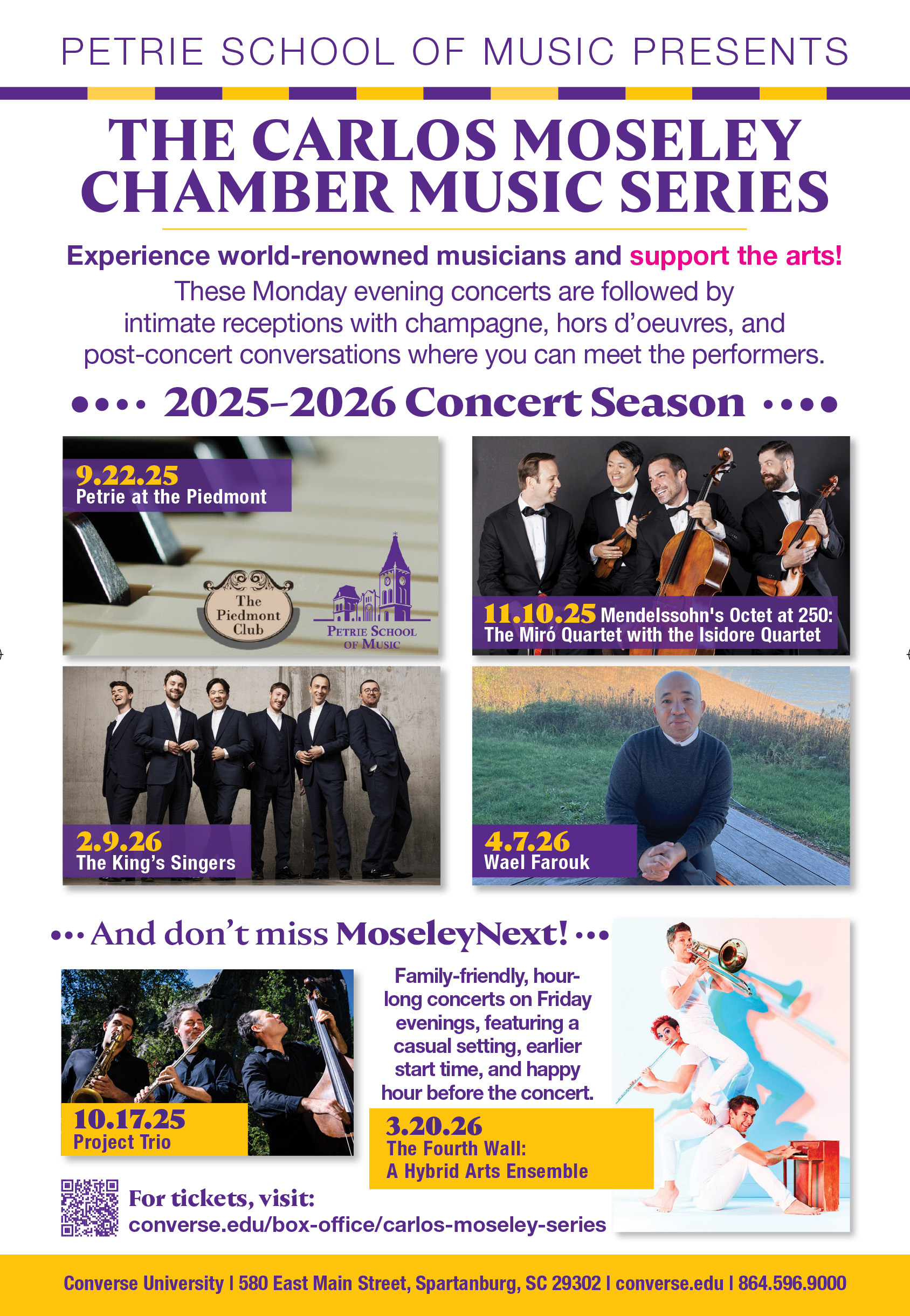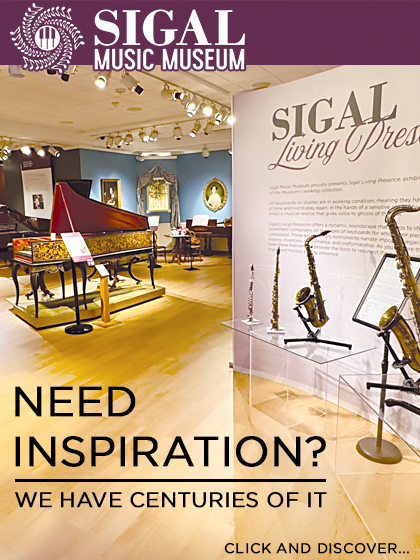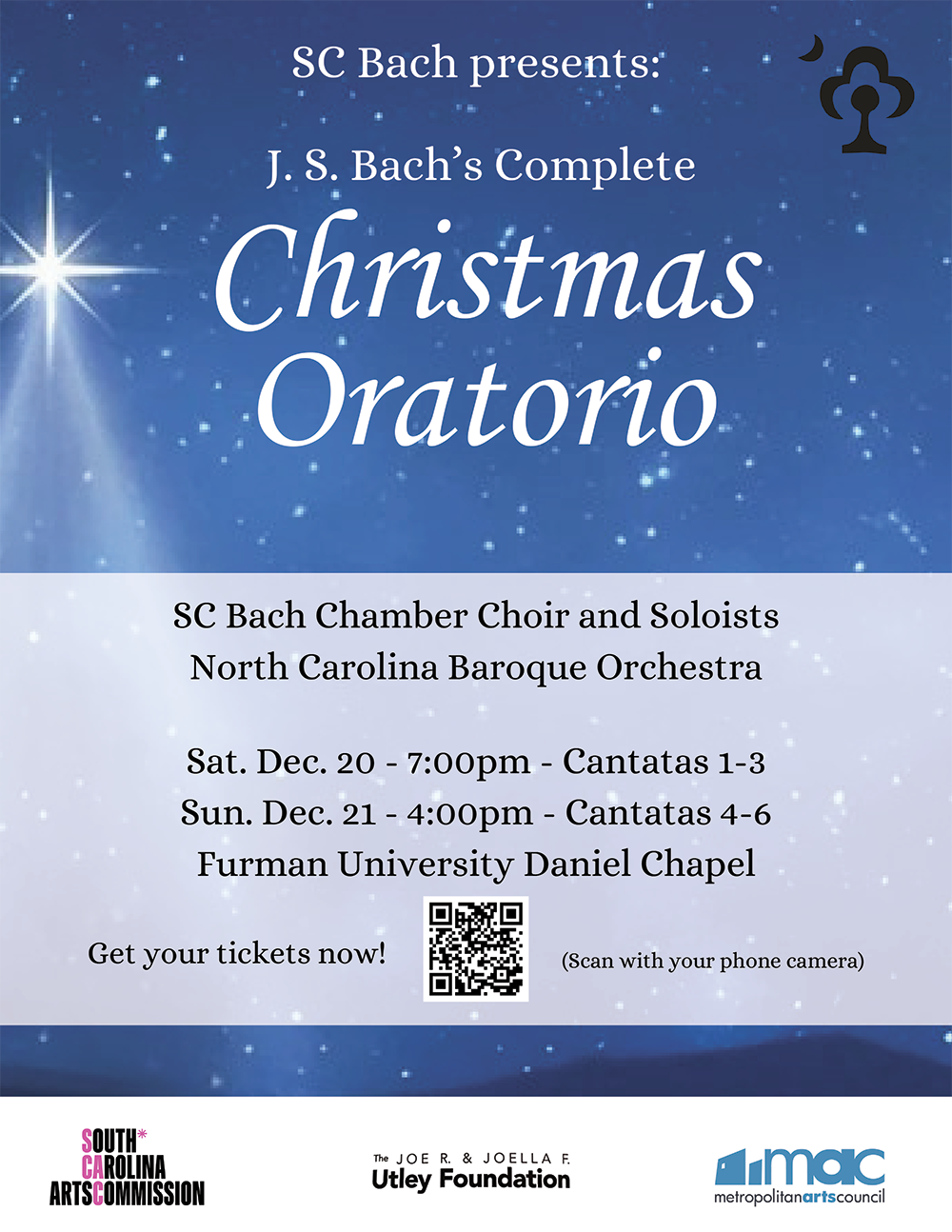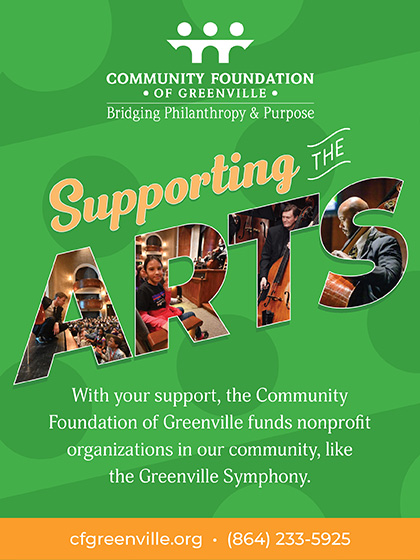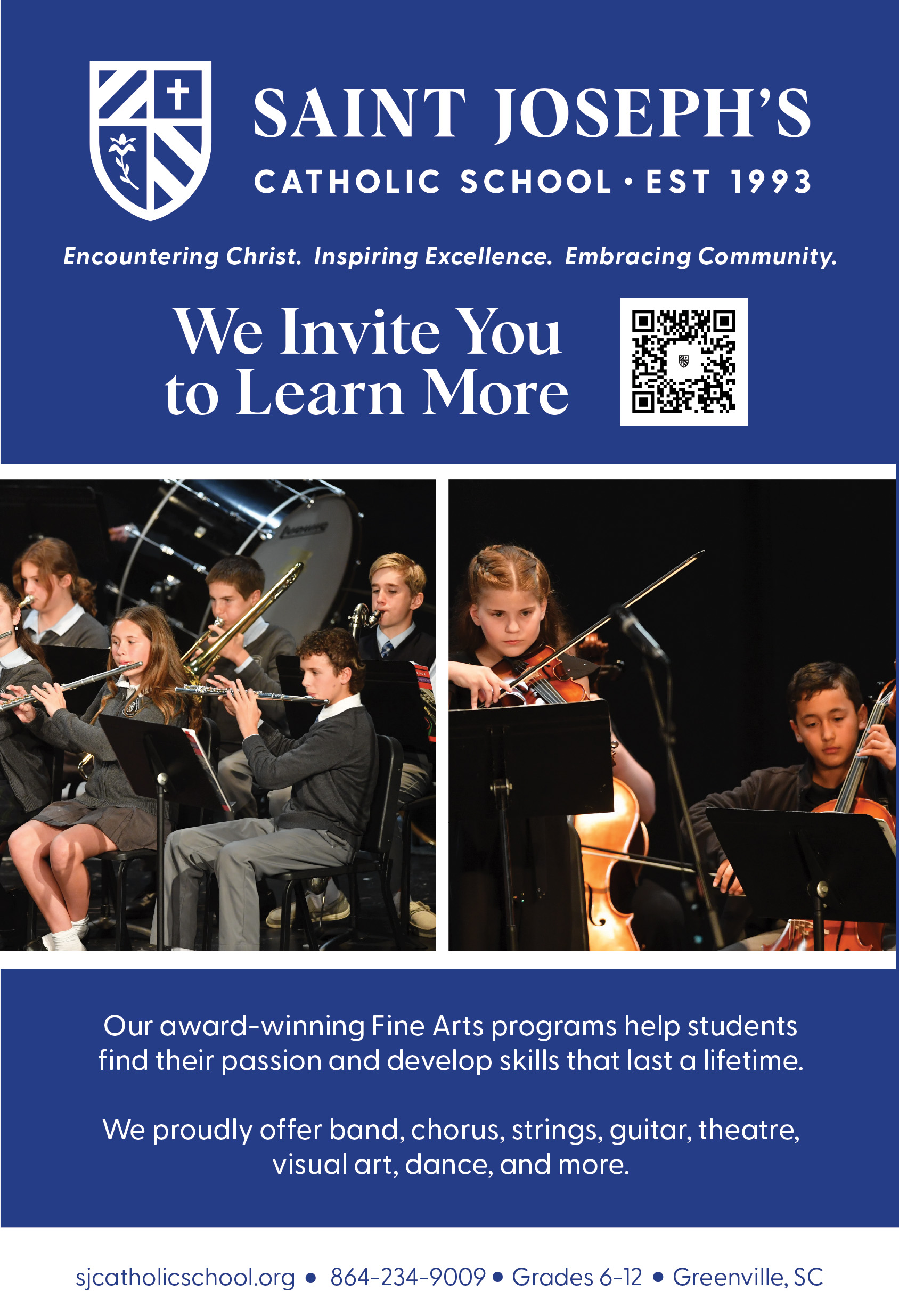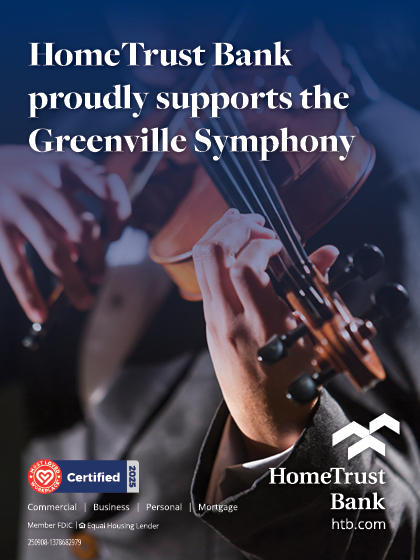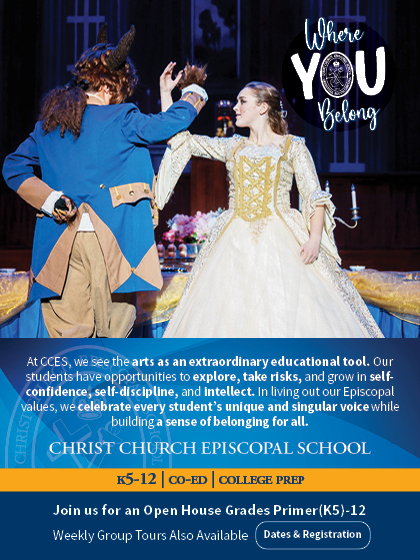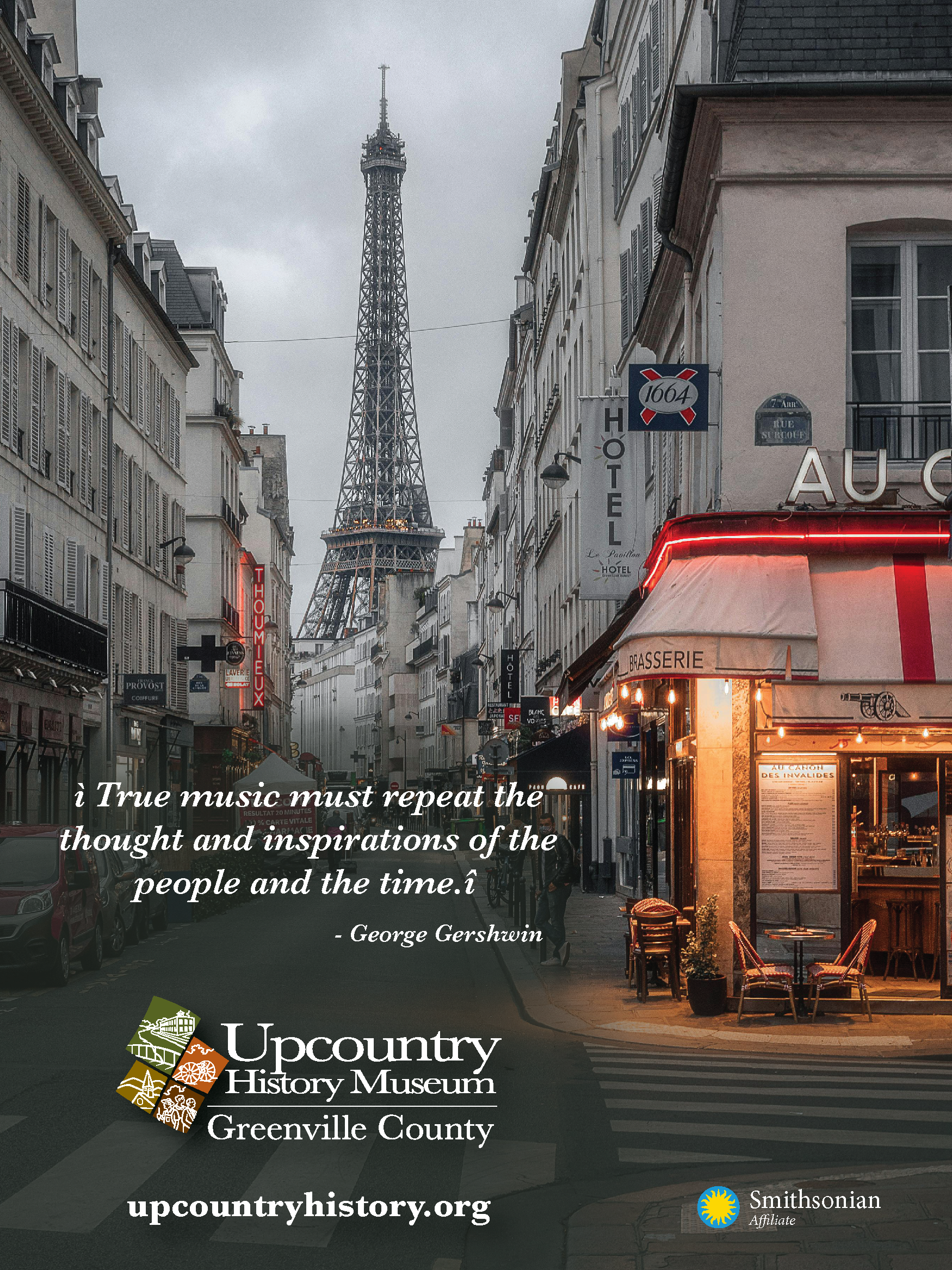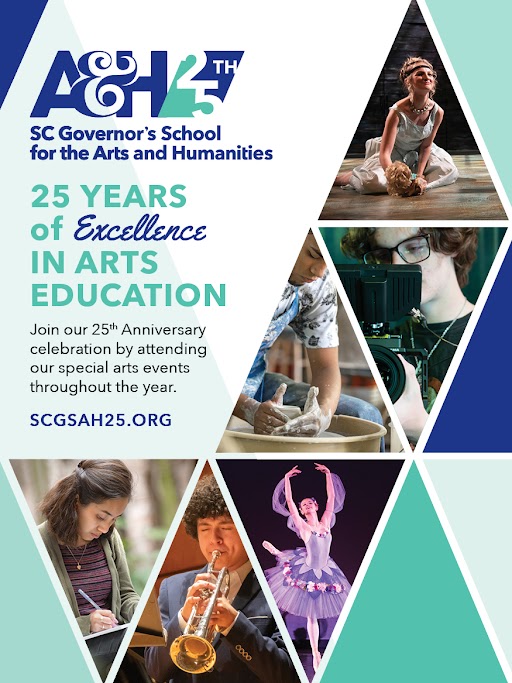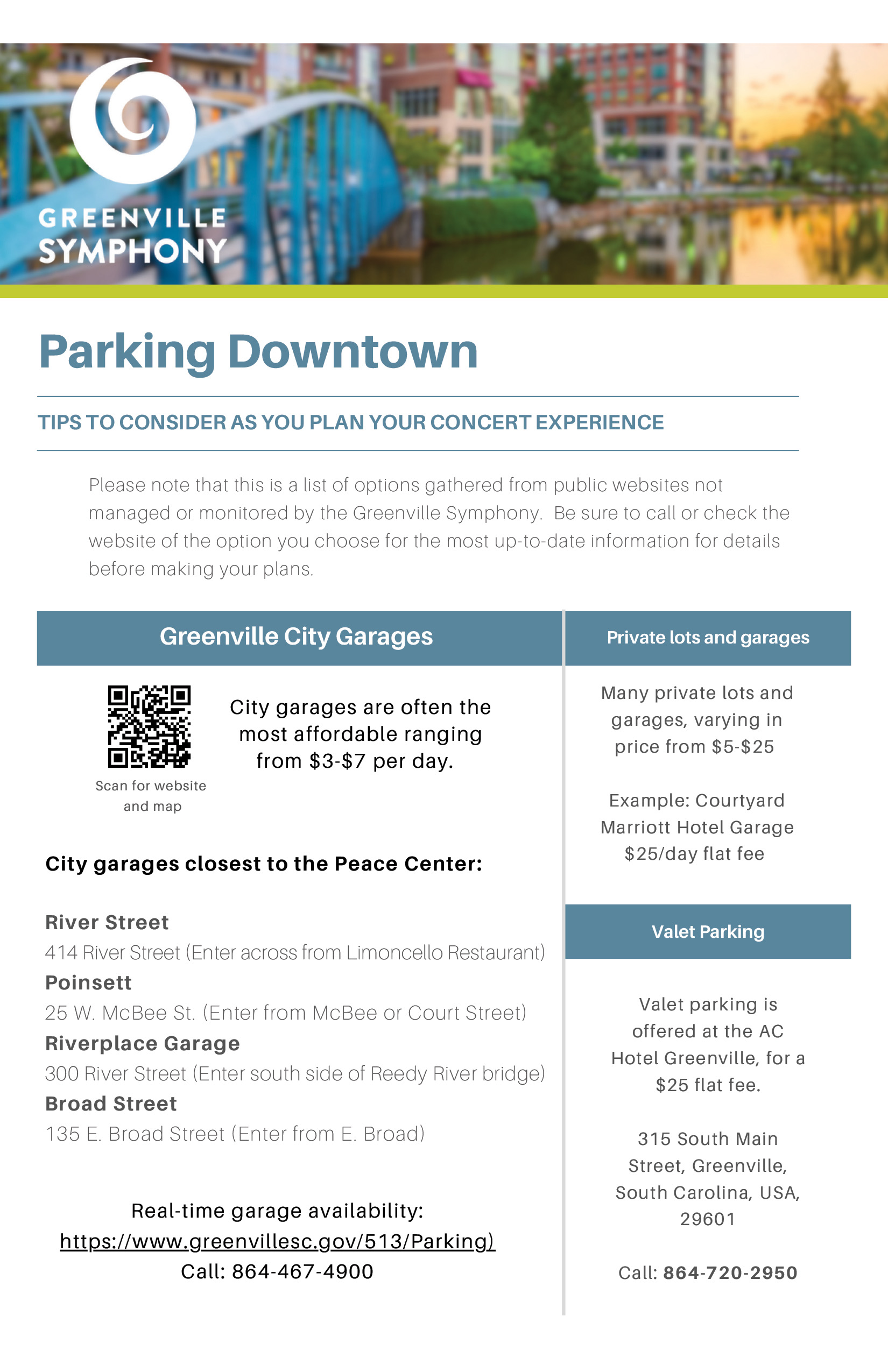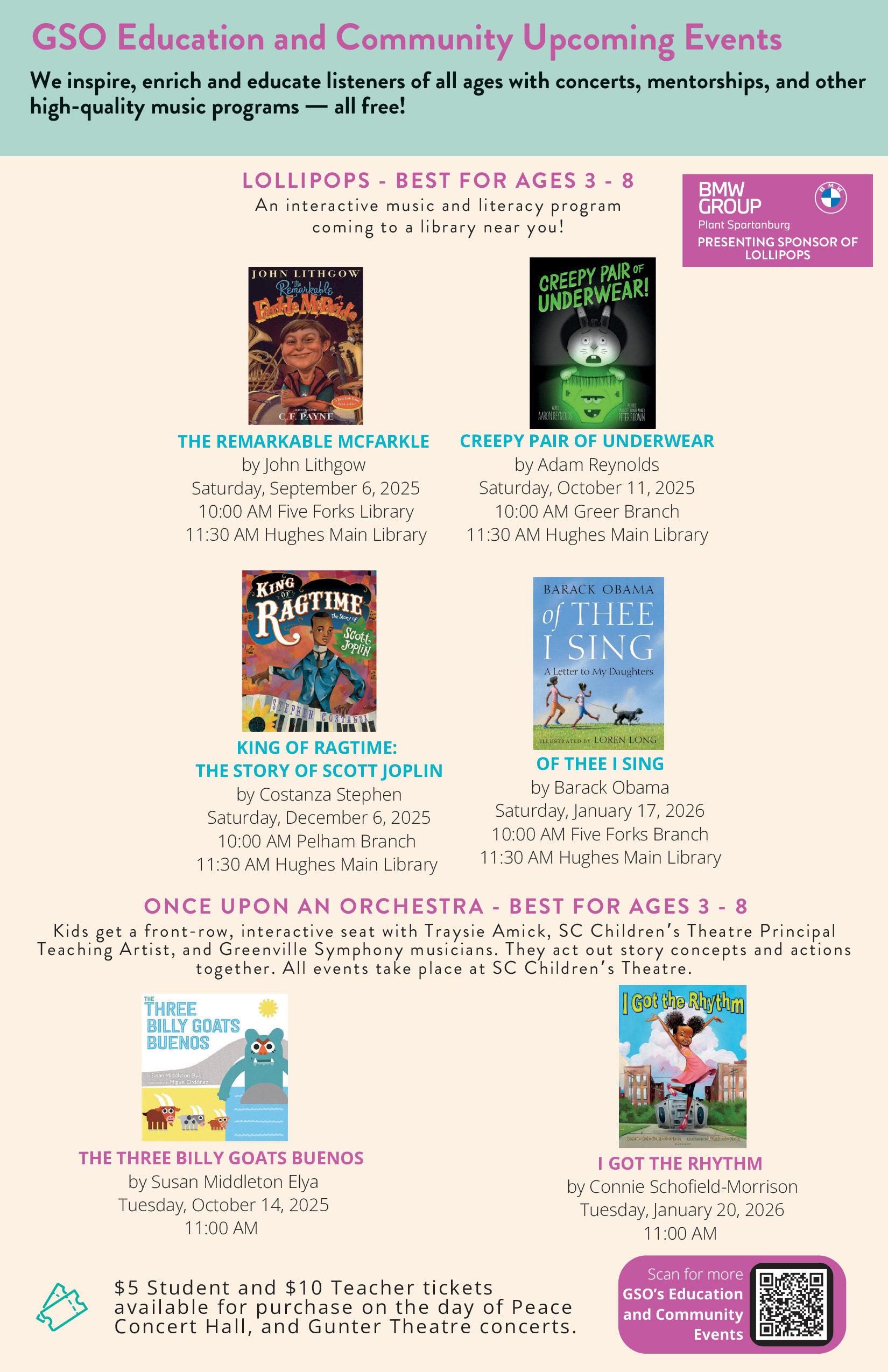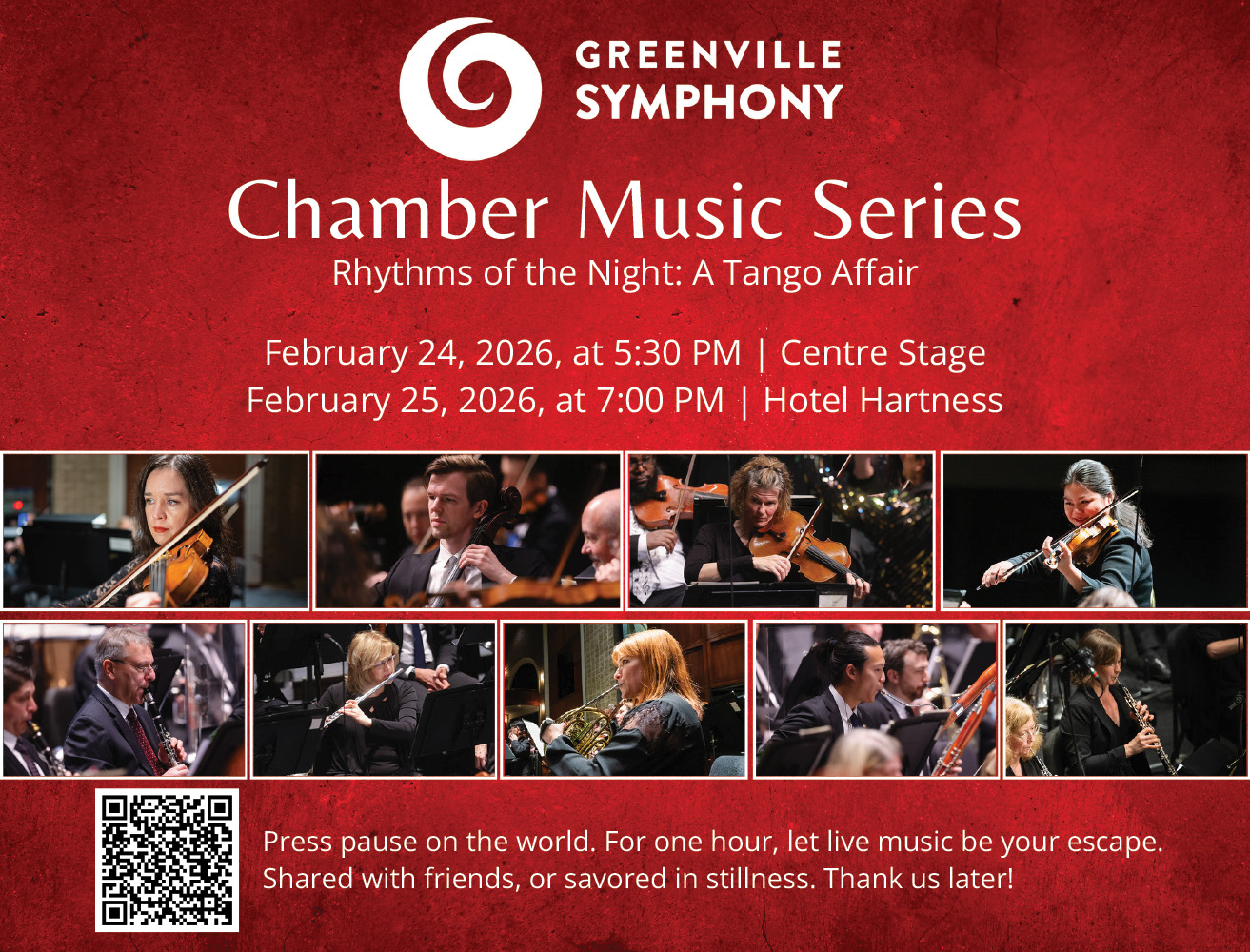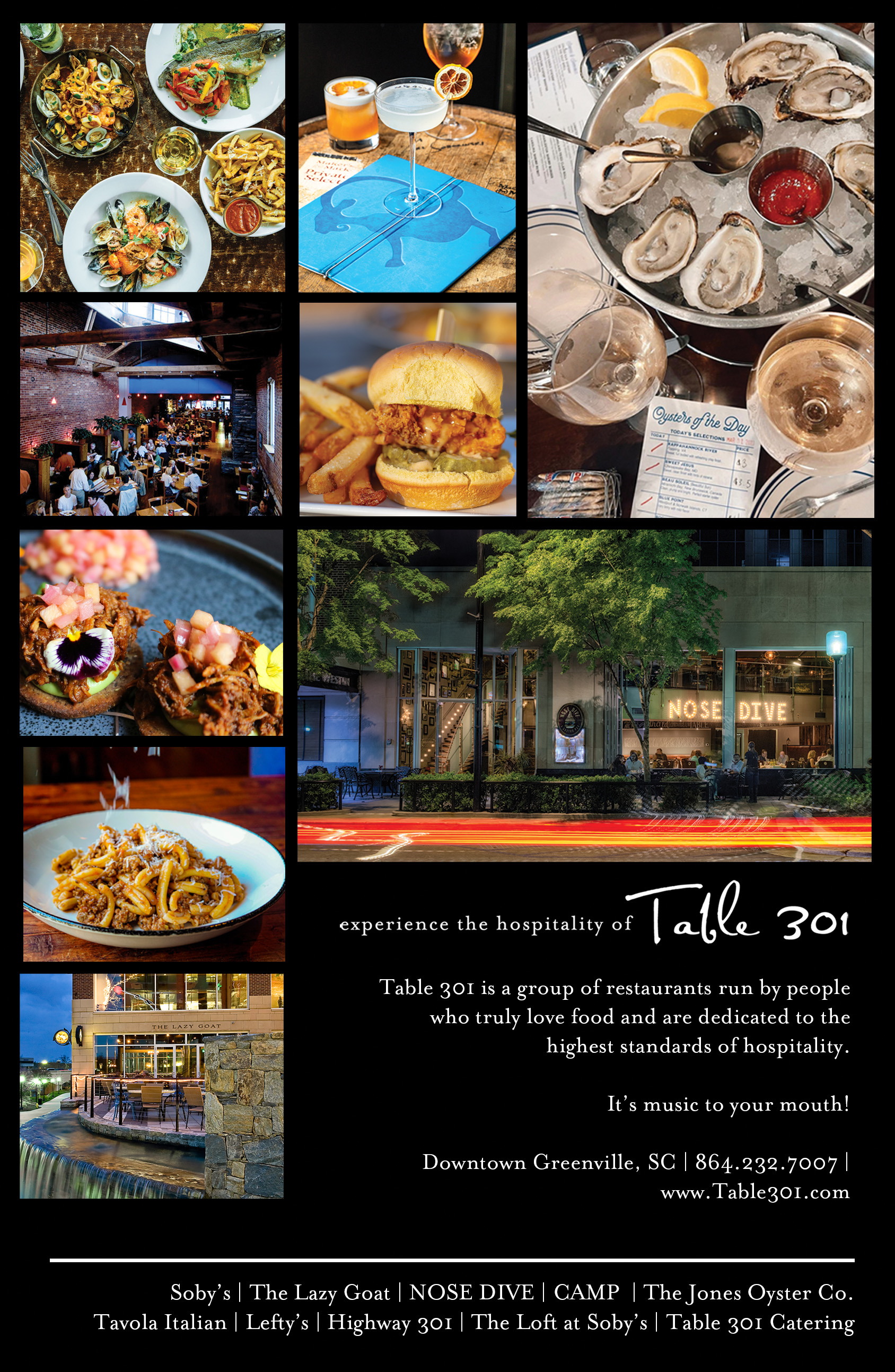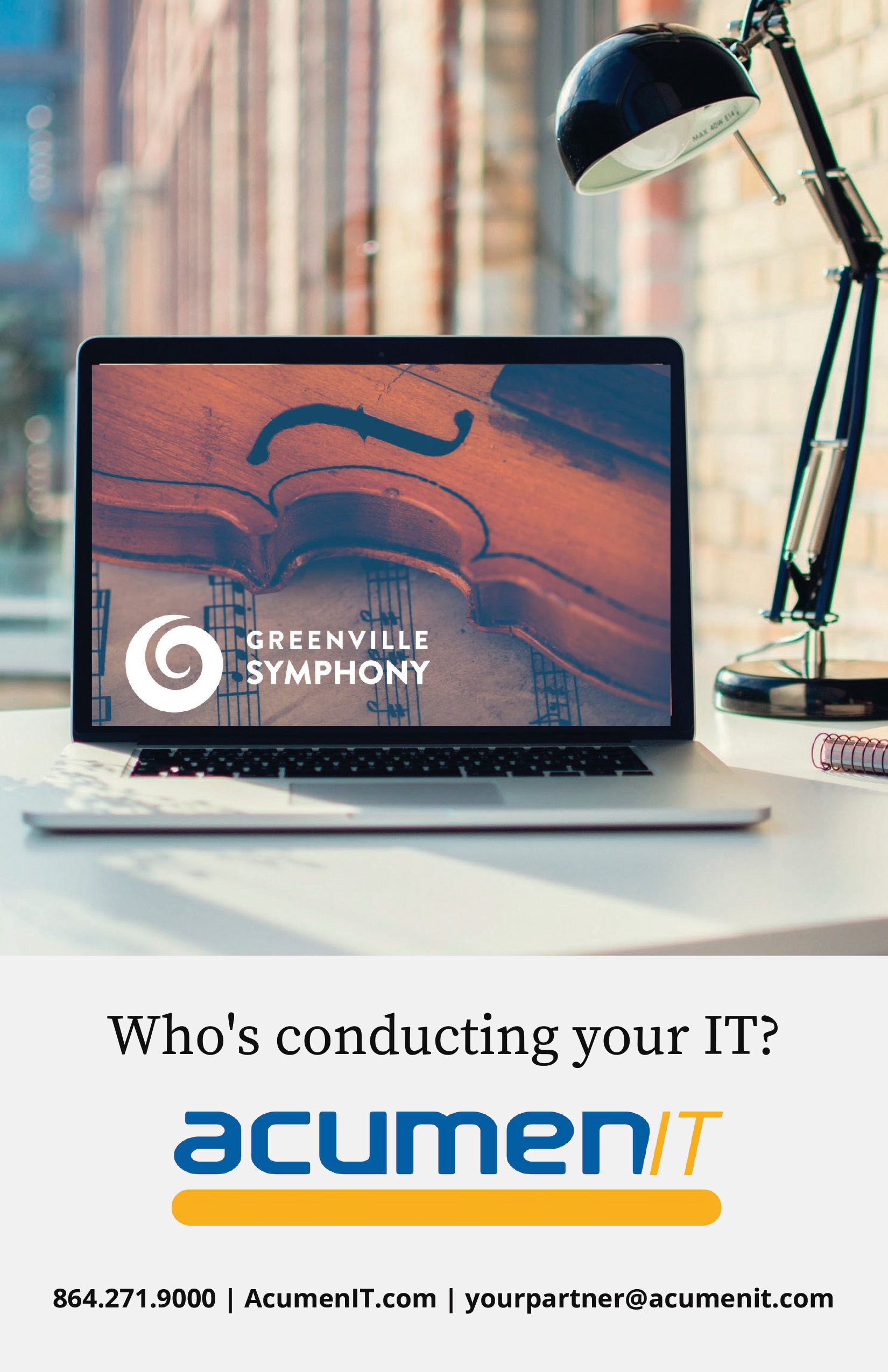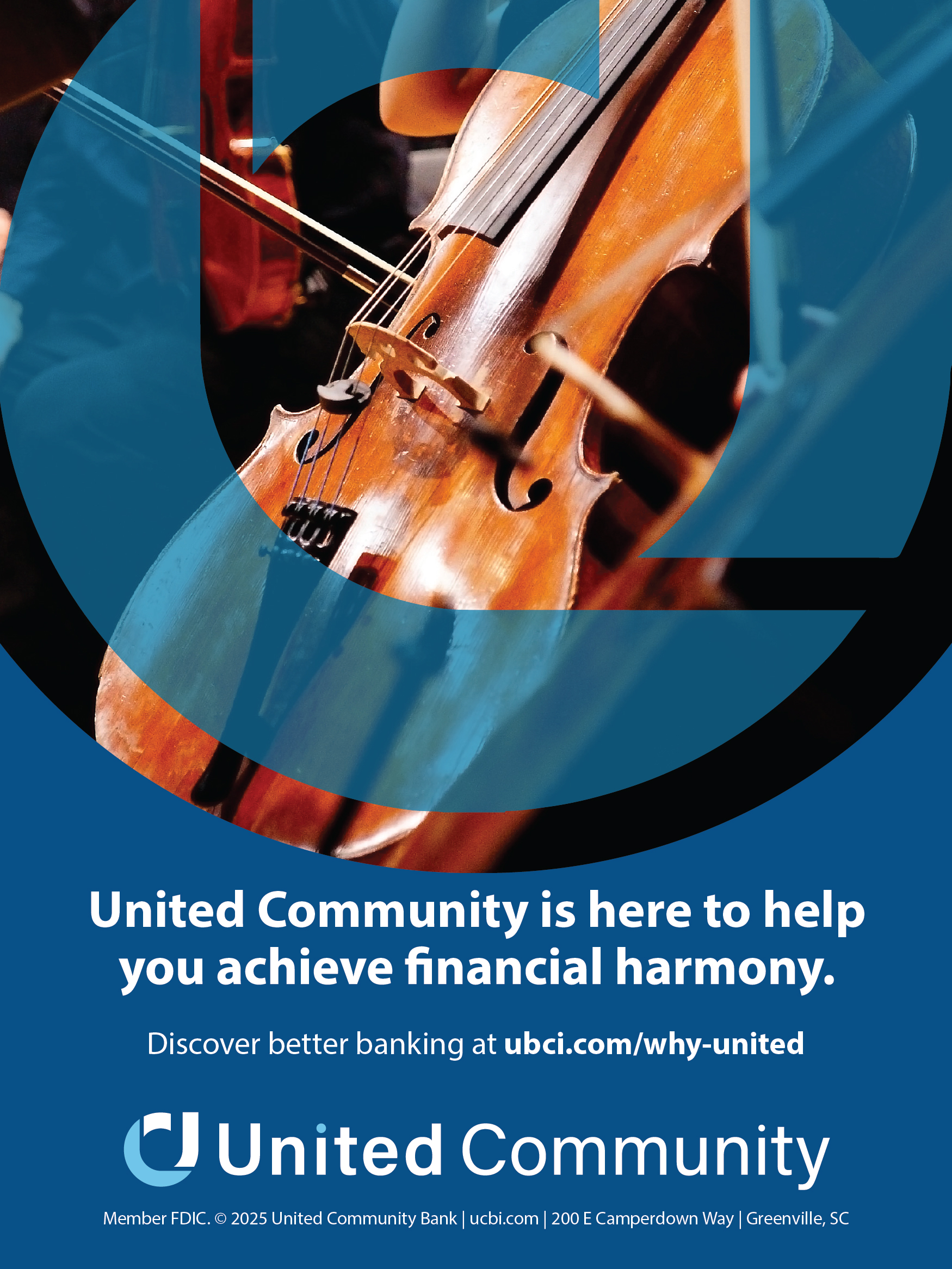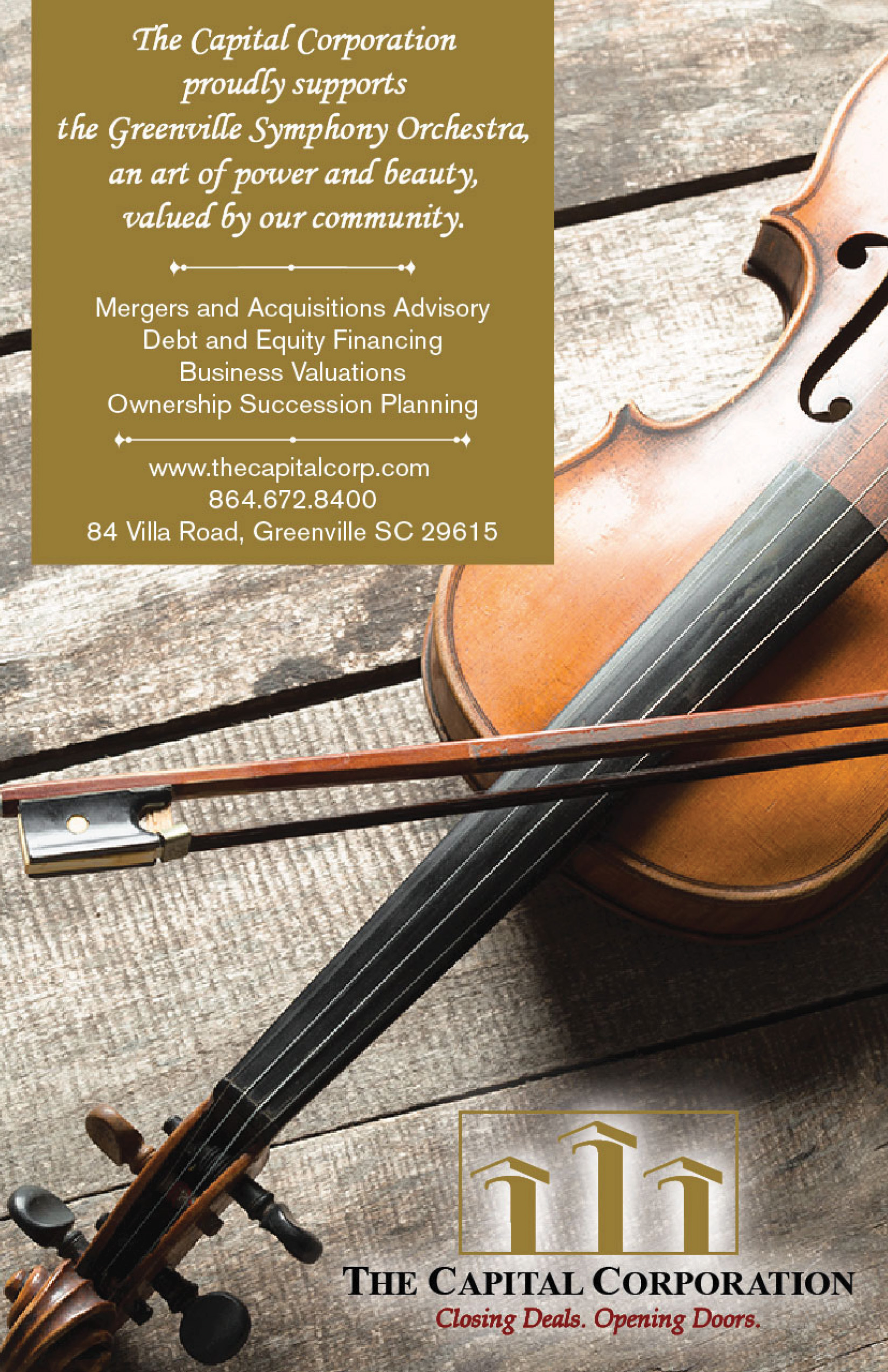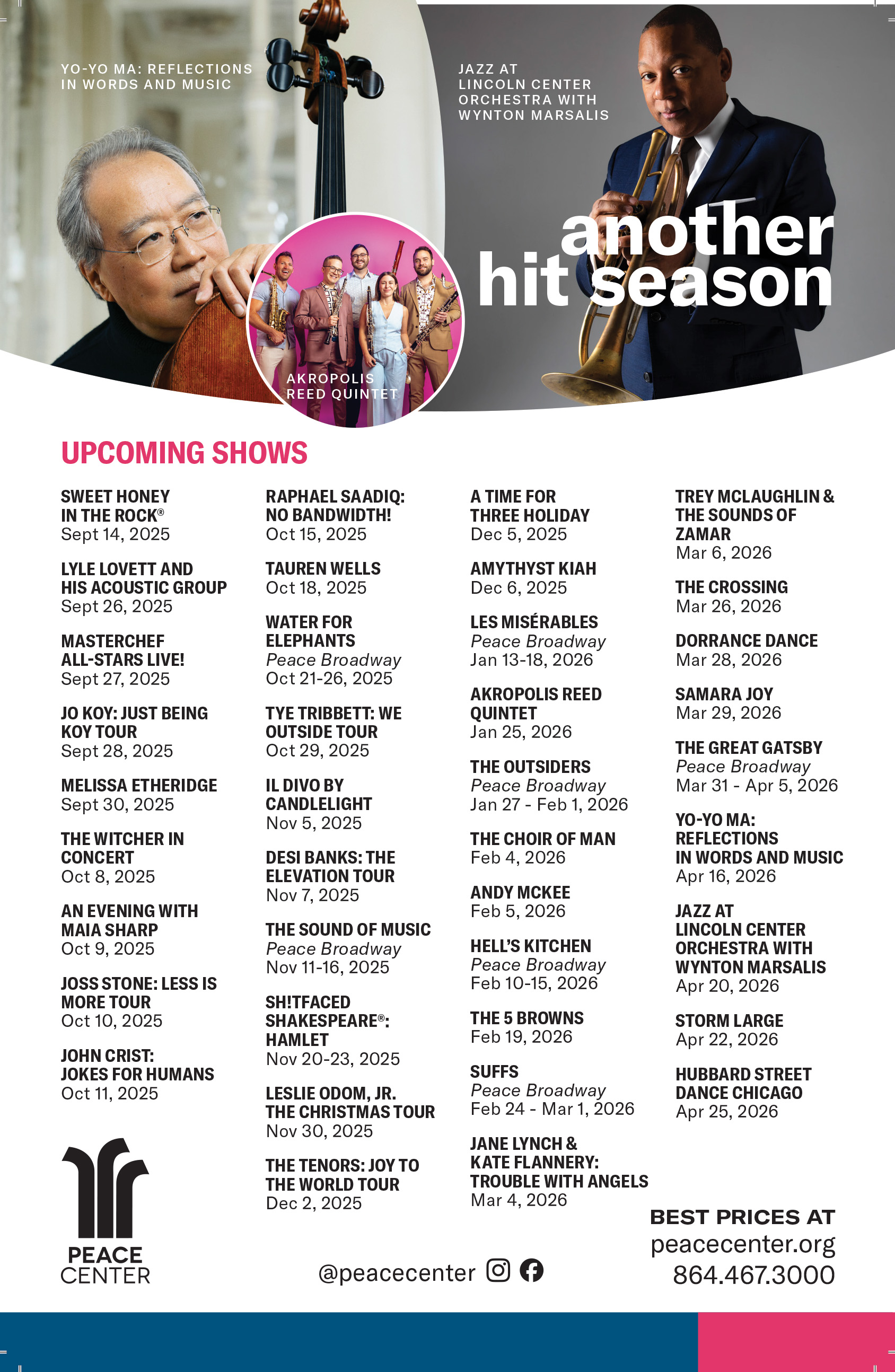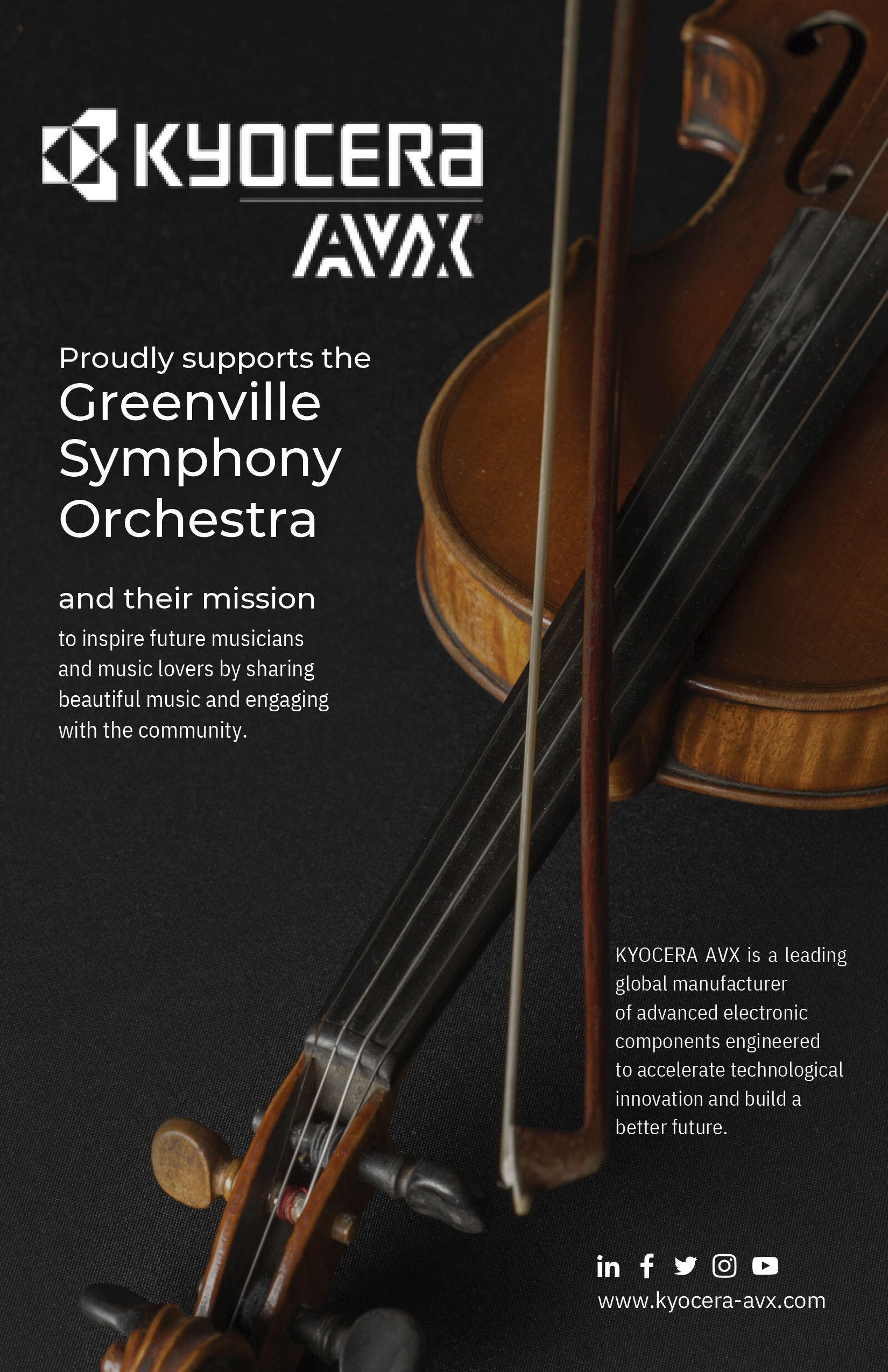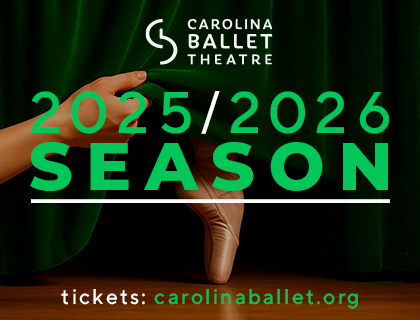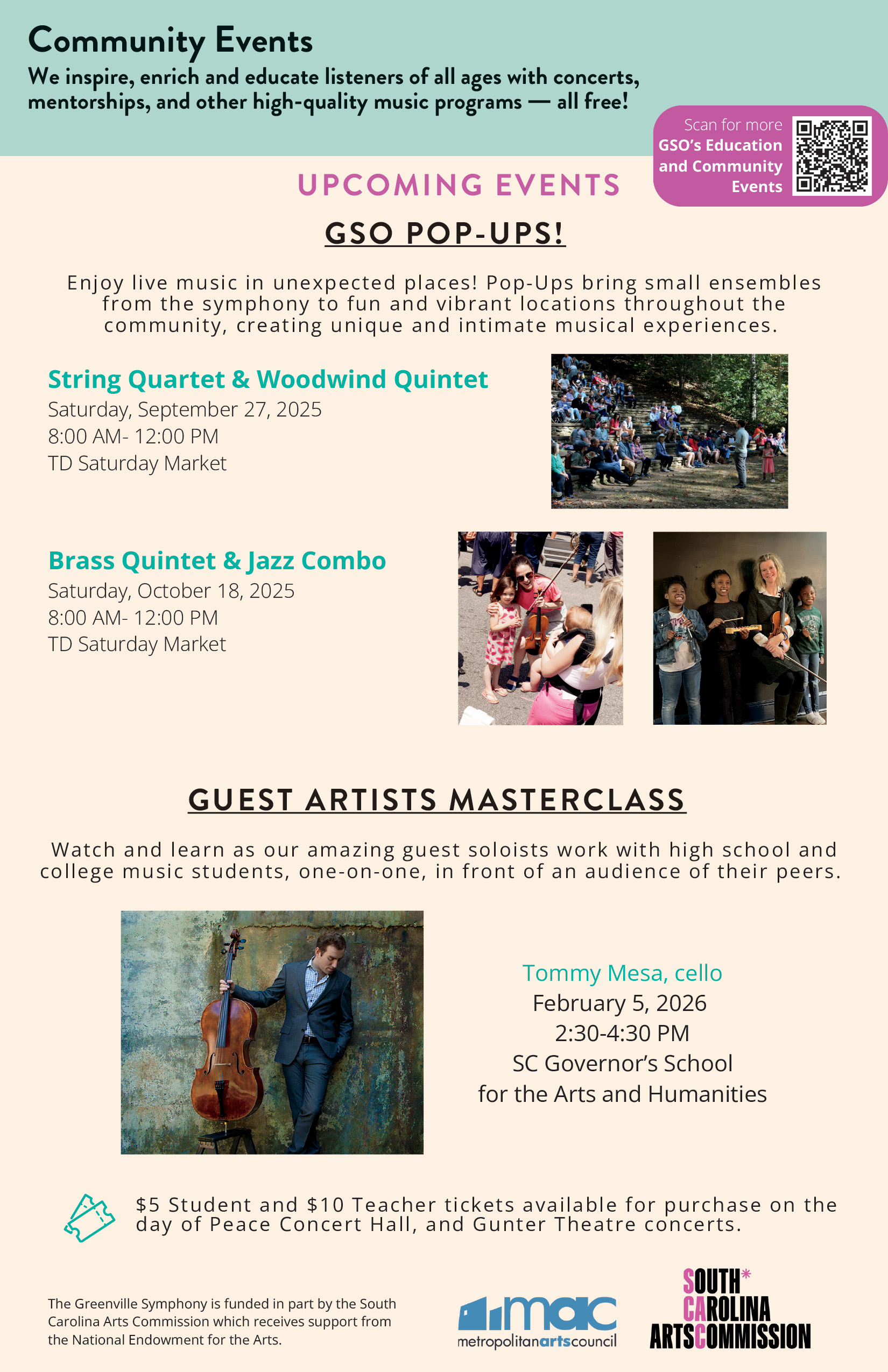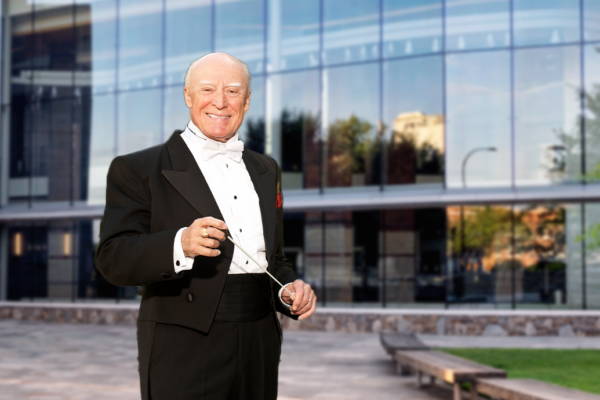

Lee Mills, Music Director
Thomas A. and Shirley W. Roe Podium Fund

Peace Concert Hall
Saturday, November 22 | 7:30 pm
Sunday, November 23 | 3:00 pm
CONDUCTOR
Edvard Tchivzhel | Music Director Emeritus
Leonard Bernstein (1918-1990) | 5' | |
George Gershwin (1898-1937) | 16' | |
| INTERMISSION | ||
Sergei Rachmaninoff (1873-1943) | 35' | |
Conductor Emeritus Tribute Weekend Title Sponsor
Elbert W. Rogers Foundation
An American in Paris
Program Notes by Paul Hyde
Overture to ‘Candide’
Leonard Bernstein (1918-1990)
Leonard Bernstein’s Overture to ‘Candide’ is a short gust of musical exuberance. Lasting less than five minutes, the overture bursts with wit and energy, blending classical form with Broadway flair.
It features a sparkling orchestration, beginning with an unconventional trumpet fanfare and followed by a violin theme played at breakneck speed. Fans of Candide, which Bernstein based on Voltaire’s short comic novel, will notice several themes from the operetta. The soaring melody at the center of the overture is based on the duet “Oh Happy We.”
The piece concludes with a kind of crescendo made famous by opera composer Gioachino Rossini, with a figure repeated over and over, with some variation, while continually growing louder. The overture’s vibrant, virtuosic style makes it a favorite worldwide as a concert-opener.
An American in Paris
George Gershwin (1898-1937)
George Gershwin wrote this tuneful and joyful piece while visiting Paris in March 1928, although he had arrived with some sketches in his luggage.
To add local color to the score, Gershwin included tuned French taxi horns in the music, evoking the bustle and vitality of Paris. But the work remains thoroughly American in its jazzy exuberance and melodic sentimentality.
For the 1928 premiere, Gershwin’s friend Deems Taylor wrote a vivid and witty narrative for the work, based on conversations with Gershwin. Taylor’s commentary, quoted at length below, relates the story conveyed by Gershwin’s purely instrumental music.
“Imagine an American visiting Paris, swinging down the Champs-Elysees on a mild, sunny morning in May or June,” Taylor wrote. “Being what he is, he starts without preliminaries and is off at full speed at once to the tune of The First Walking Theme, a straightforward diatonic air designed to convey an impression of Gallic freedom and gaiety
“Our American’s ears being open, as well as his eyes, he notes with pleasure the sounds of the city. French taxicabs seem to amuse him particularly, a fact that the orchestra points out in brief episodes introducing four real Paris taxi horns.
“Having safely eluded the taxis, our American apparently passes the open door of a café where, if one is to believe the trombones, “La Maxixe” is still popular. Exhilarated by this reminder of the gay 1900s, he resumed his stroll through the medium of the Second Walking Theme, which is announced by the clarinet in French with a strong American accent.
“Both themes are now discussed at some length by the instruments until our tourist happens to pass — something. The composer thought it might be a church, while the commentator held out for the Grand Palais — where the Solon holds forth. At all events, our hero does not go in. Instead, as revealed by the English horn, he respectfully slackens his pace until he is safely past.
“Since what immediately ensues is technically known as a bridge passage, one is reasonably justified in assuming that the Gershwin pen, guided by an unseen hand, has perpetrated a music pun, and that when the Third Walking Theme makes its eventual appearance our American has crossed the Seine and is somewhere on the Left Bank. Certainly it is distinctly less Gallic than its predecessors, speaking American with a French intonation as befits that region of the city where so many Americans foregather.
“And now the orchestra introduces an unhallowed episode (that is, a prostitute appears). Suffice it to say that a solo violin approaches our hero (in the soprano register) and addresses him in the most charming broken English and his response being inaudible — or at least unintelligible — repeats the remark. This one-sided conversation continues for some little time.
“What ensues is that our hero becomes homesick. He has the blues, and if the behavior of the orchestra be any criterion, he has them very thoroughly. He realizes suddenly, overwhelmingly, that he does not belong to this place, that he is the most wretched creature in all the world, a foreigner. The cool, blue Paris sky, the distant upward sweep of the Eiffel tower, the bookstalls on the quay, the pattern of horse-chestnut leaves on the white, sun-flecked street — what avails all this alien beauty? The world is just what he longs for, the world that he knows best, a world less lovely — sentimental and a little vulgar perhaps — but for all that home.
“However, nostalgia is not a fatal disease — nor, in this instance, of overlong duration. Just in the nick of time the compassionate orchestra rushes another theme to the rescue, two trumpets performing the ceremony of introduction. Is it apparent that our hero must have met a compatriot; for this last theme is a noisy, cheerful, self-confident Charleston, without a drop of Gallic blood in its veins.
“For the moment, Paris is no more; and a voluble, gusty, wise-cracking orchestra proceeds to demonstrate at some length that it’s always fair weather when two American get together, no matter where. Walking Theme No. 2 enters soon thereafter, enthusiastically abetted by the No. 3. Paris isn’t such a bad place after all; as a matter of fact, it’s a grand place. Nice weather, nothing to do till tomorrow, nice girls. The blues return but mitigated by the Second Walking Theme — a happy reminiscence rather than a homesick yearning — and the orchestra, in a riotous finale, decides to make a night of it. It will be great to get home; but meanwhile, this is Paris!”
Symphonic Dances
Sergei Rachmaninoff (1873-1943)
Sergei Rachmaninoff remained throughout his life a dyed-in-the-wool romantic, writing yearning, long-lined melodies into his lush orchestrations. Many of his works seem to look back in nostalgia to his Russian homeland, which he and his family fled during the 1917 revolution. He arrived in the United States in 1918 and became a naturalized American citizen in 1943, just weeks before his death.
Rachmaninoff’s Symphonic Dances is the Russian composer’s last great work, written in 1940. As the title suggests, Rachmaninoff originally intended these pieces to form the core of a ballet. Rhythm is a central element of these works, although Rachmaninoff’s characteristic rich lyricism is much in evidence as well.
Rachmaninoff appended the subtitles “Noon,” “Twilight” and “Midnight” to the three dances, although he didn’t elaborate on the meaning of these labels.
1. Non-Allegro — Lento — Tempo I (Noon). The first dance begins with a three-note falling motif against a fierce, pulsing rhythm. This forceful theme dies away and a new wistful melody is introduced by the alto saxophone, a unique instrument to find in a symphony orchestra. Other woodwind instruments, meanwhile, weave filigree. The theme is taken up by the strings with harp accompaniment. With its mournful and long curving line, this central theme seems to conjure a spacious and lonely Russian landscape or perhaps an emotional soundscape of romantic longing. Music commentators have often suggested that Rachmaninoff’s melancholy melodies reflect the Russian refugee’s nostalgia for a homeland that was forever altered by the October Revolution of 1917. (A textbook can tell us much about what happened in history, but music often tells us how history felt.) The pulsing music from the beginning returns but fades away to silence.
2. Andante con moto (Tempo di valse) (Twilight). The second dance is most certainly a waltz but one that is mysterious and even ominous at times, suitable perhaps for a haunted ballroom. In the middle section, phrases are fragmented and harmonies uncertain, evoking perhaps the subtitle of “Twilight,” an evanescent moment which is neither day nor night and things are only half-perceived. Dissonant brass and chromatic figures in the woodwinds add to the foreboding mood.
3. Lento assai - Allegro vivace (Midnight). A distinct but irregular Latin-flavored rhythm informs the finale. At the center of the piece, Rachmaninoff offers a lush and passionate episode for strings, full of striving upward and sighing downward phrases. The Latin rhythm returns, driving the energetic momentum to a fiery conclusion. In this movement, Rachmaninoff characteristically quotes from the “Dies Irae,” the medieval church chant describing the terrors of the Last Judgment. (Rachmaninoff had a fascination with the “Dies Irae” and quoted it in several of his works.) But any musical anxiety is swept away in the exhilarating coda.
Paul Hyde, a longtime arts journalist, is an English instructor at Tri-County Technical College. He writes regularly for the Greenville Journal, the S.C. Daily Gazette, EarRelevant, ArtsATL, and the Atlanta Journal-Constitution. Readers may write to him at paulhydeus@yahoo.com.
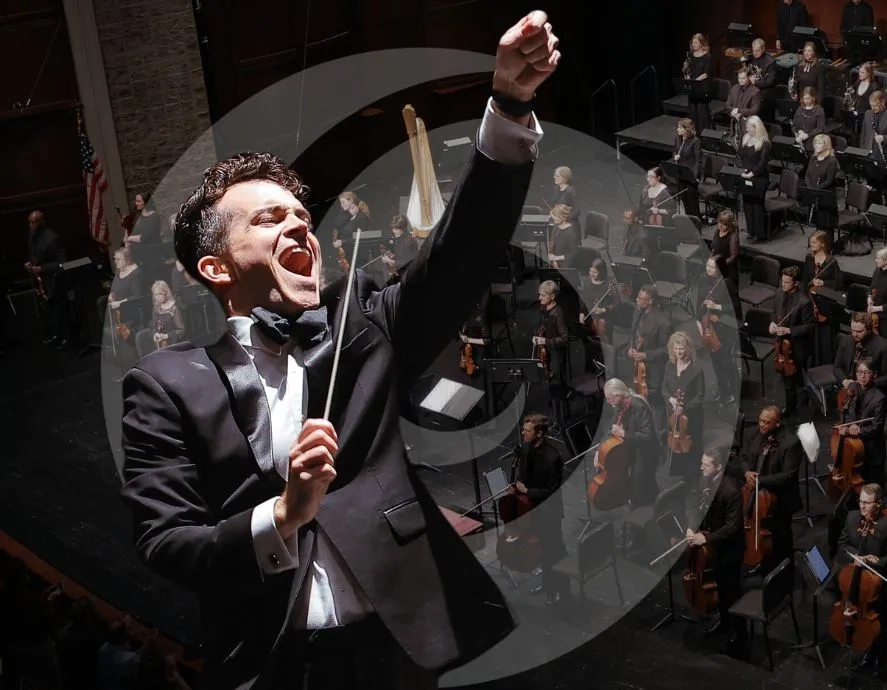
Concert Hall Series
Saturday performances at 7:30
Sunday at 3:00 pm
Opening Night: Hollywood Retrospective
October 4 & 5
An American in Paris
November 22 & 23
Dvořák’s Cello Concerto
February 7 & 8
Grand Canyon Suite + Rachmaninoff 2
March 14 & 15
West Side Story Symphonic Dances
+ Fanfare for the Common Man
April 11 & 12
Season Finale: Porgy and Bess
May 16 & 17
Gunter Theatre Series
Peter and the Wolf
November 1 at 3:00 pm
November 2 at 3:00 pm
Dvořák’s American String Quartet
February 14 at 7:30 pm
February 15 at 3:00 pm
The Last Five Years:
American Music Now
March 28 at 7:30 pm
March 29 at 3:00 pm
Dicey Langston:
The South Carolina Girl Who Defied an Army
April 25 at 3:00 pm
April 26 at 3:00 pm
Special Concerts
Holiday at Peace
December 12 at 7:00 pm
December 13 at 7:00 pm
December 14 at 2:00 pm
Peace Center
Harry Potter and the Goblet of Fire™ in Concert
January 10 at 1:00 pm and 7:00 pm
January 11 at 2:00
Peace Center
Chamber Music Series
American Echoes: from Apollo to Bluegrass
September 23 at 5:30 pm, Warehouse Theatre
September 24 at 7:00 pm, Hotel Hartness
Rhythms of the Night: A Tango Affair
February 24 at 5:30 pm, Centre Stage
February 25 at 7:00 pm, Hotel Hartness
Details and tickets available at greenvillesymphony.org
